#joerge
Explore tagged Tumblr posts
Text
Be awake!
(A short story about common sense and civil courage.)
Young law students are gathered in a lecture room of their university.
Ready to learn their first lesson - and it's gonna be a true life lesson.
The professor enters and takes a look around.
"You there, second desk. Blue jacket. What is your name?" he asks a student.
"My name is Alexis."
"Please leave my lecture room. I don't want to see you at one of my lectures ever again."
Everyone is quiet.
The student is irritated.
"I don't understand."
"I am not going to ask a second time. Thank you."
The student packs her things, gets up silently and leaves the hall.
The other students are speechless too.
Quite shaken not to say shocked.
They stare at the professor who looks at them attentively.
"Why are there laws?" he asks the group.
Still, nobody dares to speak.
Everyone looks at the others.
"What are laws for?" the professor asks again.
"Social order." someone says hesitantly.
"To protect a person's personal rights." Another student says.
A third replies.
"So that you can rely on the state."
The professor is not satisfied.
"Justice!" calls out a student.
The professor gives her a warm, encouraging smile.
"Thank you very much. Did I behave unfairly towards your classmate earlier?"
Everyone nods.
"Indeed I did. Why didn't anyone protest?
Why didn't any of you try to stop me?
Why didn't you want to prevent this injustice?" he asks.
Silence.
"What you just learned you wouldn't have understood in 1,000 hours of lectures if you hadn't lived it.
You didn't say anything just because you weren't affected yourself.
This attitude speaks against you and against life. You think as long as it doesn't concern you, it's none of your business.
I'm telling you, if you don't say anything today and don't bring about justice, then one day you too will experience injustice and no one will stand before you.
Justice lives through us all.
We have to fight for it. In life and at work, we often live next to each other instead of with each other.
We console ourselves that the problems of others are none of our business.
We go home and are glad that we were spared. But it's also about standing up for others.
Every day an injustice happens in business, in sports or on the tram.
Relying on someone to sort it out is not enough. It is our duty to be there for others.
Speaking for others when they cannot.
I am here to teach you the power of your voice.
I want you to learn criticial thinking
to empower you to stand up for what is right even if it means going against what everyone else is doing.
Let's begin."
Based upon a post by Joerg Storm and a short film by Chiara Gizzi.
#thought or the day#thought of today#joerg storm#chiara gizzi#in the light of certain events#lessons#life lessons#common sense#civil courage#civic duty#justice#injustice#law#law and order#social order#rights#civil rights#equality#fairness#unfairness#duties#business#mind your business#not my business#look and see#watch out#be awake#what if#wokeness
115 notes
·
View notes
Text
§ 20. Como puede observarse, esta solución [mantener completo silencio] es solo condicional; y tarde o temprano la verdad saldrá a la luz. Para que la credibilidad de los periódicos no se vea comprometida, debe existir necesariamente un arte de dar las malas noticias al pueblo. ¿Sobre qué se apoyará este arte? § 21. El diablo cuida de los suyos.
—Heinrich von Kleist, Manual de periodística francesa. Traducción de Francisco Acosta Joerges.
#heinrich von kleist#manual de periodística francesa#lehrbuch der französischen journalistik#francisco acosta joerges
12 notes
·
View notes
Text
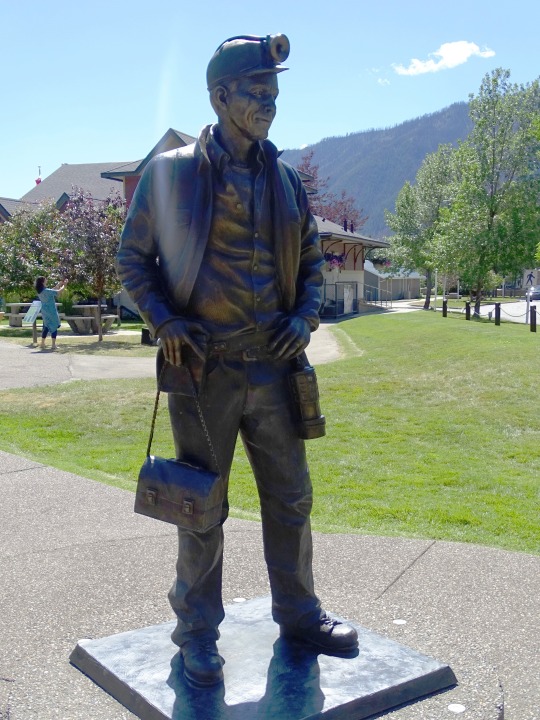















Labor Day
Summer’s final fling has arrived in the form of Labor Day. Yes, most of us get the day off, but this holiday triggers mixed emotions. While summer still has 21 calendar days left, it’s time to get serious. School’s starting and there’s a sense that summer vacation is over. So what’s behind Labor Day — and how did it earn a place as a federal holiday?
Let’s take a look.
When is Labor Day 2024?
Labor Day always falls on the first Monday in September, which means anywhere from September 1 through September 7. This year it's September 2 in the U.S. and Canada. However, this is not the case for most countries — the majority of which celebrate on May 1.
History of Labor Day
Do you get weekends off work? Lunch breaks? Paid vacation? An eight-hour workday? Social security? If you said “yes” to any of these questions, you can thank labor unions and the U.S. labor movement for it. Years of hard-fought battles (and the ensuing legislation they inspired) resulted in many of the most basic benefits we enjoy at our jobs today. On the first Monday in September, we take the day off to celebrate Labor Day and reflect on the American worker’s contributions to our country.
Labor Day History
There’s disagreement over how the holiday began. One version is set in September 1882 with the Knights of Labor, the largest and one of the most important American labor organizations at the time. The Knights in New York City held a public parade featuring various labor organizations on September 5 — with the aid of the fledgling Central Labor Union (CLU) of New York. Subsequently, CLU Secretary Matthew Maguire proposed that a national Labor Day holiday be held on the first Monday of each September to mark this successful public demonstration.
In another version, Labor Day in September was proposed by Peter J. McGuire, a vice president of the American Federation of Labor. In spring 1882, McGuire reportedly proposed a “general holiday for the laboring classes” to the CLU, which would begin with a street parade of organized labor solidarity and end with a picnic fundraiser for local unions. McGuire suggested the first Monday in September as an ideal date for Labor Day because the weather is great at that time of year, and it falls between July 4th and Thanksgiving. Oregon became the first U.S. state to make it an official public holiday. 29 other states had joined by the time the federal government declared it a federal holiday in 1894.
Maguire or McGuire? Read more on this unusual coincidence in our FAQs below.
What is the Haymarket affair?
On May 4, 1886 — at a time when most American laborers worked 18 or even 20 hours a day — tens of thousands of workers protested in cities all across the U.S. to demand an eight-hour workday. Police in Chicago attacked both those peaceful protests and a workers planning meeting two days later, randomly beating and shooting at the planning group and killing six. When outraged Chicagoans attended an initially peaceful protest the next evening in Haymarket Square, police advanced on the crowd again. Someone who was never identified detonated a bomb that killed a police officer, leading cops to open fire on protesters and provoke violence that led to the deaths of about a dozen workers and police.
The Pullman strike
Ironically, Chicago was also the setting for the bloody Pullman strike of 1894, which catalyzed the establishment of an official Labor Day holiday in the U.S. on the first Monday of September.
The strike happened in May in the company town of Pullman, Chicago, a factory location established by luxury railroad car manufacturer the Pullman Company. The inequality of the town was more than apparent. Company owner George Pullman lived in a mansion while most laborers stayed in barracks-style dormitories. When a nationwide depression struck in 1893, Pullman decided to cut costs the way a lot of executives at the time did — by lowering wages by almost 30% while he kept the rent on the dormitories he leased to his workers at pre-depression levels.
Railroad boycott
These conditions ultimately led workers to strike on May 11, 1894. The walkout gained the support of the nationwide American Railroad Union (ARU), which declared that ARU members would no longer work on trains that included Pullman cars. That national boycott would end up bringing the railroads west of Chicago to a standstill and led to 125,000 workers across 29 railroad companies quitting their jobs rather than breaking the boycott.
When the Chicago railroad companies hired strikebreakers as replacements, strikers also took various actions to stop the trains. The General Managers Association, which represented local railroad companies, countered by inducing U.S. Attorney General Richard Olney, a former railroad attorney, to intervene. Indianapolis federal courts granted Olney an injunction against the strike, a move that allowed President Grover Cleveland to send in federal troops to break it up.
A few days later, Cleveland realized that he had to act quickly to appease the country’s increasingly agitated labor movement. But he didn’t want to commemorate the Haymarket incident with a May holiday that would invoke radical worker sentiment. So Cleveland harkened back to the first established September 1882 holiday and signed into law that Labor Day in the U.S. would be celebrated on the first Monday in September.
Labor Day vs. May Day
Communist and socialist factions worldwide eventually chose May 1 as the date to mark the Haymarket affair. A 1904 conference issued a plea that trade unions stage rallies on the first day of May — demanding to make the eight-hour workday standard. They organized the action in the name of “universal peace.” The 1st of May is a national, public holiday in many countries across the world, generally known as “Labour Day,” “International Workers’ Day,” or a similar name – although some countries celebrate a Labor Day on other dates significant to them, such as Canada, which celebrates Labor Day, like the U.S., on the first Monday of September.
Here’s the U.S. Department of Labor’s official tribute to U.S. workers on Labor Day:
“The vital force of labor added materially to the highest standard of living and the greatest production the world has ever known, and has brought us closer to the realization of our traditional ideals of economic and political democracy. It is appropriate, therefore, that the nation pays tribute on Labor Day to the creator of so much of the nation’s strength, freedom, and leadership — the American worker.”
Related Labor Day Content
1) Top Labor Day quotes for your social feeds
Can you guess which president said, “My father taught me to work; he did not teach me to love it”? How about the famous American who uttered “All labor that uplifts humanity has dignity”? We have a list of Labor Day quotes to not only learn about the holiday but to also impress your friends at the barbecue.
2) Fire yourself from your own job
That’s correct. The makers of STōK cold-brew coffees have designed a contest — running through Labor Day — which will give three people $30,000 each in order to take a four-week “STōKbbattical” (from their dreary day jobs) and “make their dreams happen.” It can be anything from rock climbing in Patagonia to setting records for the number of tapas eaten in Spain. No matter what, STōK will help fund it. Unless of course, you’d prefer to spend the next four weeks filling out TPS reports.
3) 8 Labor Day Activities To Enjoy
Whether in the form of a leisurely barbeque, a relaxing swim in the pool, watching a film at a drive-in cinema, or even just relaxing at home with family, there are so many different ways to mark the occasion. We list some activities to try on Labor Day.
Labor Day timeline
1882 It’s Unofficial
10,000 labor workers march through Union Square in New York to protest poor working conditions and low wages.
1884 A Date is Set
The first Monday of September officially becomes Labor Day, with the Central Labor Union pushing other organizations to follow suit and celebrate.
1894 Congress Approves
Labor Day is approved as a national holiday by Congress, and President Grover Cleveland signs it into law.
2009 Let’s Not Forget Women in Labor
President Obama restores the rights of women to sue over pay discrimination with the Lilly Ledbetter Fair Pay Act.
Labor Day Traditions
Much like Memorial Day, which marks the traditional beginning of summer, Labor Day generally signifies that the season has ended — even though the calendar says otherwise. Holiday sales, barbecues, and travel tend to rule the day, while children finally adjust to the harsh reality of the “back-to-school” season. As far as U.S. sports are concerned, Labor Day weekend signals that baseball’s pennant races have entered their final stretch, and tennis fans get an extra day to watch the season’s last Grand Slam event — the U.S. Open in New York City. NFL regular-season games typically begin following Labor Day.
Labor Day by the numbers
162 million – the number of Americans (over 16) in the labor force.
40% – the percentage of U.S. workers who belonged to labor unions in the 1950s (that dropped to 11% by 2018).
1894 – the year Congress officially made Labor Day a federal holiday.
86% – the percentage of Americans planning Labor Day weekend travel who will do so by car.
41% – the percentage of Americans who plan to barbecue over Labor Day Weekend.
818 – the number of U.S. hot dogs eaten every second from Memorial Day to Labor Day.
$685 – the average kid’s back-to-school expenses.
$55,000 – the median U.S. household income.
705 million – the total number of U.S. unused vacation days (2017).
80% – the percentage of Americans who would take time off if their boss were more supportive.
— courtesy WalletHub ©2018
Labor Day FAQs
What does Labor Day really mean?
Americans, as well as workers around the world, celebrate Labor Day by reflecting on all the contributions everyday workers have made to society. Not all countries observe Labor Day on the same date though.
When is Labor Day 2020?
The U.S. observed Labor Day 2020 on Monday, September 2. It’s a federal holiday. Financial markets are closed. There is no mail delivery. Post offices and libraries are closed. Most retail businesses will remain open.
Who invented Labor Day?
It’s more confusing than you might think. The Labor Department explains it this way:
While most sources, including the U.S. Department of Labor, credit Peter McGuire with the origination of Labor Day, recent evidence suggests that the true father of Labor Day may, in fact, be another famous union leader of the 19th century, Matthew Maguire.
Maguire held some political beliefs that were considered fairly radical for the day and also for Samuel Gompers and his American Federation of Labor. Allegedly, Gompers, who co-founded the AFL along with his friend McGuire, did not want Labor Day to become associated with the sort of “radical” politics of Matthew Maguire. So in an 1897 interview, Gompers’ close friend Peter J. McGuire was assigned the credit for the origination of Labor Day.
What's the difference between Labor Day and May Day (May 1)
May 1 (or May Day) is a more radicalized version of Labor Day in many countries. The date recalls Chicago’s Haymarket affair in 1886. American workers, tired of 18-hour days, staged a protest. Police eventually fired on the workers — killing eight. The following night, May 4, another rally turned violent when someone threw a bomb at police officers. An estimated 11 people died and scores more were injured. Communist and socialist political parties eventually chose May 1 as the date to honor the dead and injured workers.
Labor Day Activities
Read up on the history of Labor Day
Buy an American-made product
Watch a movie about labor unions
Labor Day has a rich history that directly impacts the working conditions we experience today. So in between rounds of BBQ at your Labor Day celebration, take the time to discuss the U.S. labor movement and its contribution to our country's current work culture.
When you're doing your Labor Day shopping, take the time to read the labels. Consider buying products that say "Made in the USA" to show your support for American workers.
Many of us get Labor Day off. What better way to relax than to stretch out on the couch and watch a movie about the American labor movement? There are tons of union-themed movies to choose from. "Norma Rae" ring a bell? Side note: Unions play a major role in the entertainment industry.
5 Labor Day Facts Everyone Should Know!
It’s on May 1 in other countries
Stores remain open
Third most popular holiday for outdoor cookouts
Labor Day marks the unofficial NFL kickoff
Union members today
Most countries around the world celebrate Labor Day on May 1, and it is called International Workers’ Day.
While most schools and offices are closed on Labor Day, retail workers and shopkeepers don’t get the same break, as the holiday is huge for sales and shopping.
Labor Day is right behind the Fourth of July and Memorial Day in being the most popular holiday for barbecues and cookouts.
99.4% of the time, the NFL’s first official game of the season is on the Thursday following Labor Day.
In 2017, there were 14.8 million union members, according to the Bureau of Labor Statistics, while in 1983, there were 17.7 million.
Why We Love Labor Day
We're hard workers — we deserve the day off
It's one last chance to grill
It's the reason we can say TGIF
Statistics show that Americans work longer hours than citizens of most other countries — 137 more hours per year than Japan, 260 more per year than the U.K., and 499 more than France. And our productivity is high — 400% higher than it was in 1950, to be exact. So we totally deserve that day off.
Labor Day is widely considered to be the unofficial last day of summer. Before the air turns cold and the leaves start to fall, it's our last chance to grill some steaks and wear shorts.
Labor Day is a time to celebrate the benefits we enjoy at our jobs — including weekends off. The concept of American workers taking days off dates back to 1791, when a group of carpenters in Philadelphia went on strike to demand a shorter workweek (10-hour days, to be exact). It wasn't until 1836 that workers started demanding eight-hour workdays. So nine to five doesn't sound so bad after all.
Source
#Edmonton#Sparwood#Coal Miner#British Columbia#Terex 33-19 Titan#USA#Canada#Labor Day#First Monday in September#2 September 2024#LaborDay#Logger by Joerg Jung#Prospector and his dog by Chuck Buchanan#Stampeder Statue by Peter Lucchetti#Skagway Centennial Statue by Chuck Buchanan#Standing Together by John Greer#Anonymity of Prevention by Derek Lo and Lana Winkler#Whitehorse#travel#original photography#tourist attraction#landmark#vacation
3 notes
·
View notes
Text
instagram
2 notes
·
View notes
Text
youtube
Hermann Kopp and Monika M - Squelette delicieux
3 notes
·
View notes
Text

#Joaquín Sorolla y Bastida#Beach of Biarritz#oil painting#1906#Playa de Biarritz#photo by Joerg Lohse
3 notes
·
View notes
Text

Wednesday 13 September Mixtape 369 “Safe for Dreaming” Experimental Electronic Cosmic Space Instrumental Retro Synth Wednesdays, Fridays & Sundays. Support the artists and labels. Don't forget to tip so future shows can bloom.
Castle If-Not Safe For Life 00:31
Volker Rapp-Regina regit colorem 03:16
Kösmonaut-Liquid Veil 10:04
Golden Bug, In Fields-Breath 16:47
The British Stereo Collective-Travelogue (The Journey) 22:25
Jarmodular-The impulses of everyday life 25:03
Brandon Reisig-Hawk-Wind 33:43
Lustbader-Still Dreaming 41:34
Lone Bison-Sad Ending 49:37
João Paulo Daniel-Folclore Impressionista 53:19
Liam White-Thallium 56:55
Marc Codsi-The Dance1:02:47
Mark Barrott-Yonige-Ya (夜逃げ屋) 1:05:09
Joerg Dankert-Journey to K2-415b 1:09:30
#Castle If#Volker Rapp#Cyclical Dreams#Kösmonaut#Golden Bug#In Fields#Höga Nord Rekords#The British Stereo Collective#Castles In Space#Jarmodular#Brandon Reisig#Lustbader#Deep Electronics#Lone Bison#João Paulo Daniel#Liam White#Marc Codsi#Discrepant#Mark Barrott#Joerg Dankert
2 notes
·
View notes
Text





Jörg Hartmann
sources:
gala
bild
tagesspiegel
waz
sueddeutsche
3 notes
·
View notes
Text

Joerg Oestreich
51 notes
·
View notes
Text
El gran poeta nunca se abandona a sí mismo, puede elevarse sobre sí mismo tanto como quiera. Se puede caer también en la altura, tanto como en la profundidad. (...) Pero no debe pensar que puede superarse solo in crescendo desde lo débil hasta lo fuerte, de este modo se volverá falso y se tensará demasiado; debe sentir que gana en ligereza lo que pierde en relevancia, que la quietud reemplaza bellamente la vehemencia y la sensatez al ímpetu y así no habrá un solo tono necesario en el progreso de su obra que no supere en cierto sentido al anterior, y el tono predominante solo lo será porque el todo está compuesto de esta y de ninguna otra manera.
—Friedrich Hölderlin, «Reflexión». Traducción de Francisco Acosta Joerges y Víctor Ibarra B., publicada en Hablar de poesía.
9 notes
·
View notes
Text
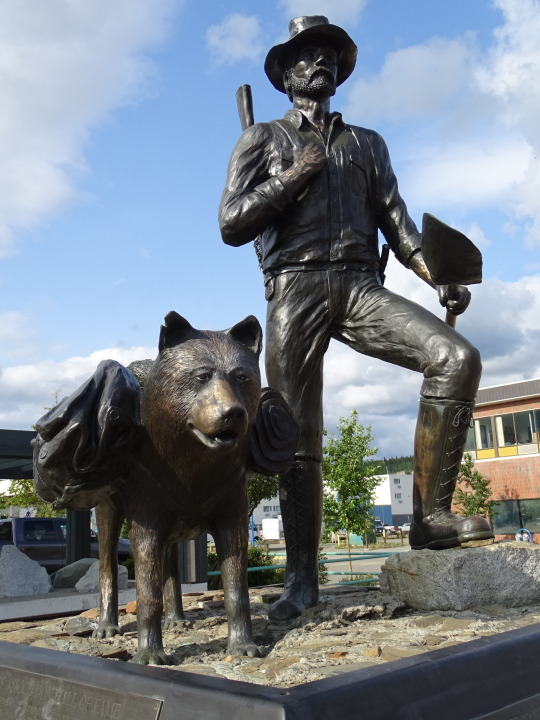

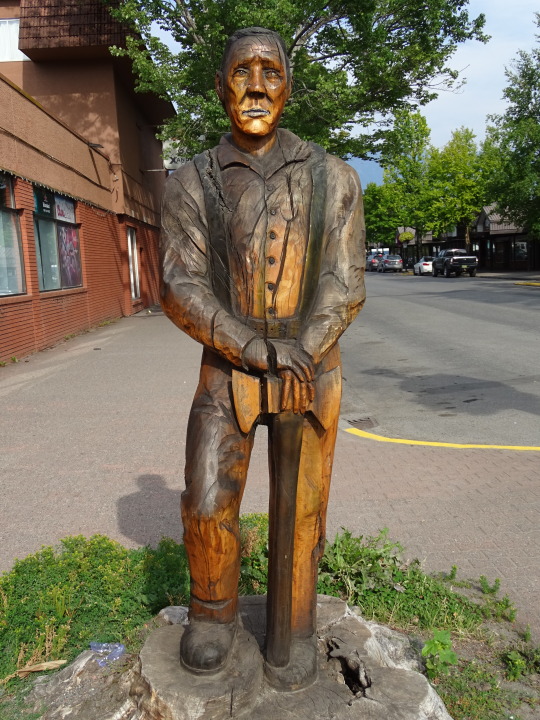
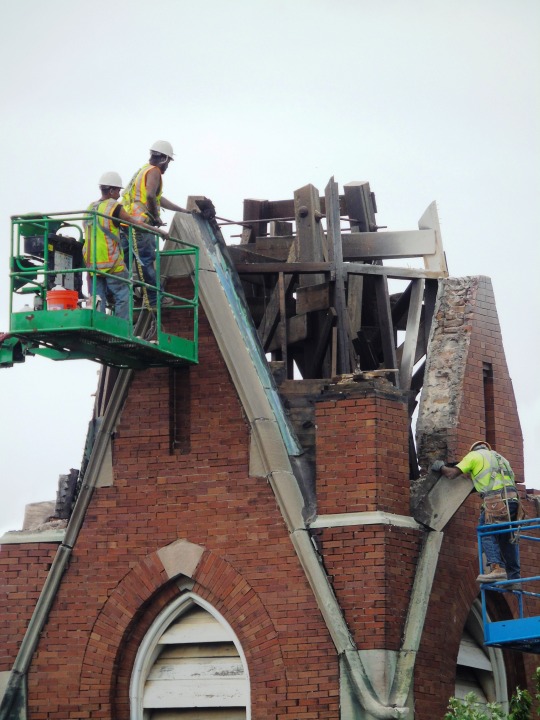
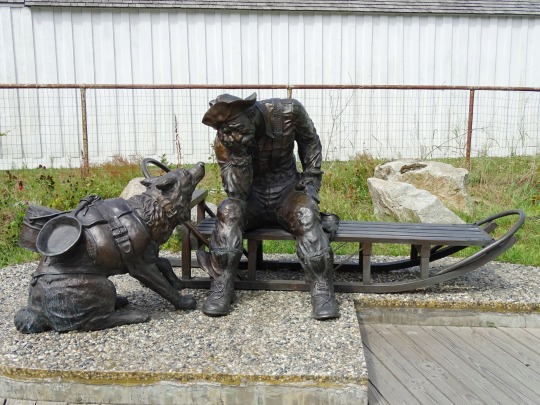
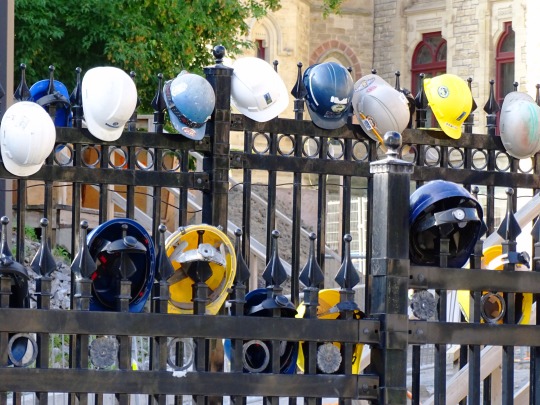
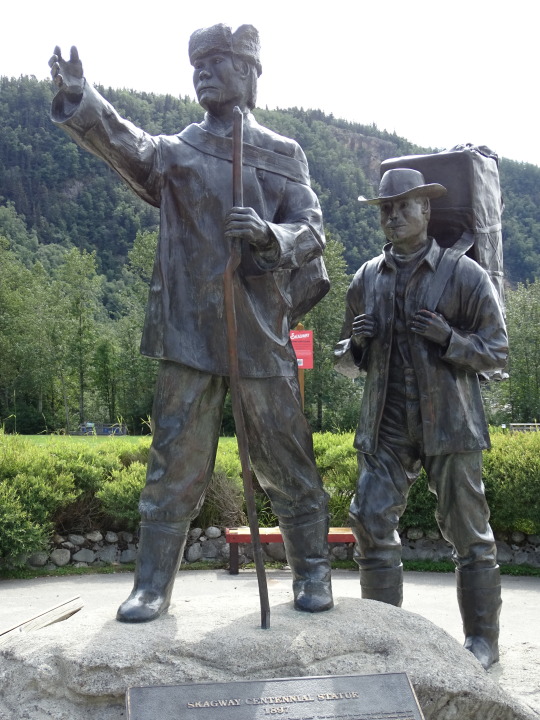





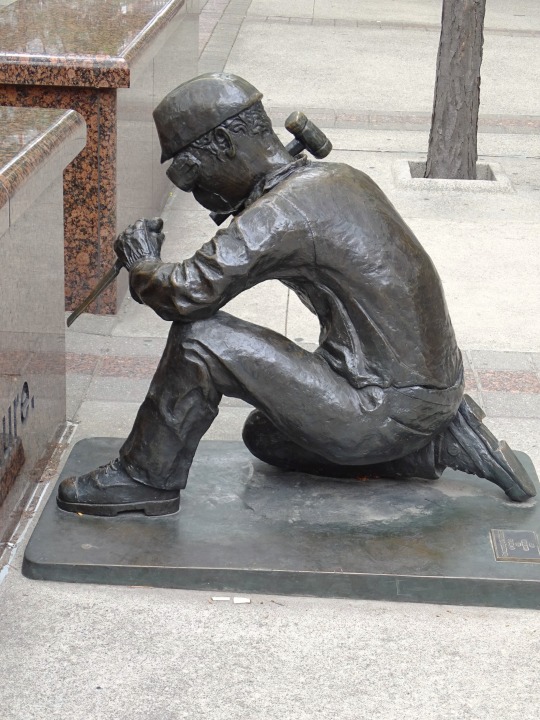
Labor Day
Summer’s final fling has arrived in the form of Labor Day. Yes, most of us get the day off, but this holiday triggers mixed emotions. While summer still has 21 calendar days left, it’s time to get serious. School’s starting and there’s a sense that summer vacation is over. So what’s behind Labor Day — and how did it earn a place as a federal holiday?
Let’s take a look.
When is Labor Day 2023?
Labor Day always falls on the first Monday in September, which means anywhere from September 1 through September 7. This year it's September 4 in the U.S. and Canada. However, this is not the case for most countries — the majority of which celebrate on May 1.
History of Labor Day
Do you get weekends off work? Lunch breaks? Paid vacation? An eight-hour workday? Social security? If you said “yes” to any of these questions, you can thank labor unions and the U.S. labor movement for it. Years of hard-fought battles (and the ensuing legislation they inspired) resulted in many of the most basic benefits we enjoy at our jobs today. On the first Monday in September, we take the day off to celebrate Labor Day and reflect on the American worker’s contributions to our country.
Labor Day History
There’s disagreement over how the holiday began. One version is set in September 1882 with the Knights of Labor, the largest and one of the most important American labor organizations at the time. The Knights in New York City held a public parade featuring various labor organizations on September 5 — with the aid of the fledgling Central Labor Union (CLU) of New York. Subsequently, CLU Secretary Matthew Maguire proposed that a national Labor Day holiday be held on the first Monday of each September to mark this successful public demonstration.
In another version, Labor Day in September was proposed by Peter J. McGuire, a vice president of the American Federation of Labor. In spring 1882, McGuire reportedly proposed a “general holiday for the laboring classes” to the CLU, which would begin with a street parade of organized labor solidarity and end with a picnic fundraiser for local unions. McGuire suggested the first Monday in September as an ideal date for Labor Day because the weather is great at that time of year, and it falls between July 4th and Thanksgiving. Oregon became the first U.S. state to make it an official public holiday. 29 other states had joined by the time the federal government declared it a federal holiday in 1894.
Maguire or McGuire? Read more on this unusual coincidence in our FAQs below.
What is the Haymarket affair?
On May 4, 1886 — at a time when most American laborers worked 18 or even 20 hours a day — tens of thousands of workers protested in cities all across the U.S. to demand an eight-hour workday. Police in Chicago attacked both those peaceful protests and a workers planning meeting two days later, randomly beating and shooting at the planning group and killing six. When outraged Chicagoans attended an initially peaceful protest the next evening in Haymarket Square, police advanced on the crowd again. Someone who was never identified detonated a bomb that killed a police officer, leading cops to open fire on protesters and provoke violence that led to the deaths of about a dozen workers and police.
The Pullman strike
Ironically, Chicago was also the setting for the bloody Pullman strike of 1894, which catalyzed the establishment of an official Labor Day holiday in the U.S. on the first Monday of September.
The strike happened in May in the company town of Pullman, Chicago, a factory location established by luxury railroad car manufacturer the Pullman Company. The inequality of the town was more than apparent. Company owner George Pullman lived in a mansion while most laborers stayed in barracks-style dormitories. When a nationwide depression struck in 1893, Pullman decided to cut costs the way a lot of executives at the time did — by lowering wages by almost 30% while he kept the rent on the dormitories he leased to his workers at pre-depression levels.
Railroad boycott
These conditions ultimately led workers to strike on May 11, 1894. The walkout gained the support of the nationwide American Railroad Union (ARU), which declared that ARU members would no longer work on trains that included Pullman cars. That national boycott would end up bringing the railroads west of Chicago to a standstill and led to 125,000 workers across 29 railroad companies quitting their jobs rather than breaking the boycott.
When the Chicago railroad companies hired strikebreakers as replacements, strikers also took various actions to stop the trains. The General Managers Association, which represented local railroad companies, countered by inducing U.S. Attorney General Richard Olney, a former railroad attorney, to intervene. Indianapolis federal courts granted Olney an injunction against the strike, a move that allowed President Grover Cleveland to send in federal troops to break it up.
A few days later, Cleveland realized that he had to act quickly to appease the country’s increasingly agitated labor movement. But he didn’t want to commemorate the Haymarket incident with a May holiday that would invoke radical worker sentiment. So Cleveland harkened back to the first established September 1882 holiday and signed into law that Labor Day in the U.S. would be celebrated on the first Monday in September.
Labor Day vs. May Day
Communist and socialist factions worldwide eventually chose May 1 as the date to mark the Haymarket affair. A 1904 conference issued a plea that trade unions stage rallies on the first day of May — demanding to make the eight-hour workday standard. They organized the action in the name of “universal peace.” The 1st of May is a national, public holiday in many countries across the world, generally known as “Labour Day,” “International Workers’ Day,” or a similar name – although some countries celebrate a Labor Day on other dates significant to them, such as Canada, which celebrates Labor Day, like the U.S., on the first Monday of September.
Here’s the U.S. Department of Labor’s official tribute to U.S. workers on Labor Day:
“The vital force of labor added materially to the highest standard of living and the greatest production the world has ever known, and has brought us closer to the realization of our traditional ideals of economic and political democracy. It is appropriate, therefore, that the nation pays tribute on Labor Day to the creator of so much of the nation’s strength, freedom, and leadership — the American worker.”
Related Labor Day Content
1) Top Labor Day quotes for your social feeds
Can you guess which president said, “My father taught me to work; he did not teach me to love it”? How about the famous American who uttered “All labor that uplifts humanity has dignity”? We have a list of Labor Day quotes to not only learn about the holiday but to also impress your friends at the barbecue.
2) Fire yourself from your own job
That’s correct. The makers of STōK cold-brew coffees have designed a contest — running through Labor Day — which will give three people $30,000 each in order to take a four-week “STōKbbattical” (from their dreary day jobs) and “make their dreams happen.” It can be anything from rock climbing in Patagonia to setting records for the number of tapas eaten in Spain. No matter what, STōK will help fund it. Unless of course, you’d prefer to spend the next four weeks filling out TPS reports.
3) 8 Labor Day Activities To Enjoy
Whether in the form of a leisurely barbeque, a relaxing swim in the pool, watching a film at a drive-in cinema, or even just relaxing at home with family, there are so many different ways to mark the occasion. We list some activities to try on Labor Day.
Labor Day timeline
1882 It’s Unofficial
10,000 labor workers march through Union Square in New York to protest poor working conditions and low wages.
1884 A Date is Set
The first Monday of September officially becomes Labor Day, with the Central Labor Union pushing other organizations to follow suit and celebrate.
1894 Congress Approves
Labor Day is approved as a national holiday by Congress, and President Grover Cleveland signs it into law.
2009 Let’s Not Forget Women in Labor
President Obama restores the rights of women to sue over pay discrimination with the Lilly Ledbetter Fair Pay Act.
Labor Day Traditions
Much like Memorial Day, which marks the traditional beginning of summer, Labor Day generally signifies that the season has ended — even though the calendar says otherwise. Holiday sales, barbecues, and travel tend to rule the day, while children finally adjust to the harsh reality of the “back-to-school” season. As far as U.S. sports are concerned, Labor Day weekend signals that baseball’s pennant races have entered their final stretch, and tennis fans get an extra day to watch the season’s last Grand Slam event — the U.S. Open in New York City. NFL regular-season games typically begin following Labor Day.
Labor Day by the numbers
162 million – the number of Americans (over 16) in the labor force.
40% – the percentage of U.S. workers who belonged to labor unions in the 1950s (that dropped to 11% by 2018).
1894 – the year Congress officially made Labor Day a federal holiday.
86% – the percentage of Americans planning Labor Day weekend travel who will do so by car.
41% – the percentage of Americans who plan to barbecue over Labor Day Weekend.
818 – the number of U.S. hot dogs eaten every second from Memorial Day to Labor Day.
$685 – the average kid’s back-to-school expenses.
$55,000 – the median U.S. household income.
705 million – the total number of U.S. unused vacation days (2017).
80% – the percentage of Americans who would take time off if their boss were more supportive.
— courtesy WalletHub ©2018
Labor Day FAQs
What does Labor Day really mean?
Americans, as well as workers around the world, celebrate Labor Day by reflecting on all the contributions everyday workers have made to society. Not all countries observe Labor Day on the same date though.
When is Labor Day 2020?
The U.S. observed Labor Day 2020 on Monday, September 2. It’s a federal holiday. Financial markets are closed. There is no mail delivery. Post offices and libraries are closed. Most retail businesses will remain open.
Who invented Labor Day?
It’s more confusing than you might think. The Labor Department explains it this way:
While most sources, including the U.S. Department of Labor, credit Peter McGuire with the origination of Labor Day, recent evidence suggests that the true father of Labor Day may, in fact, be another famous union leader of the 19th century, Matthew Maguire.
Maguire held some political beliefs that were considered fairly radical for the day and also for Samuel Gompers and his American Federation of Labor. Allegedly, Gompers, who co-founded the AFL along with his friend McGuire, did not want Labor Day to become associated with the sort of “radical” politics of Matthew Maguire. So in an 1897 interview, Gompers’ close friend Peter J. McGuire was assigned the credit for the origination of Labor Day.
What's the difference between Labor Day and May Day (May 1)
May 1 (or May Day) is a more radicalized version of Labor Day in many countries. The date recalls Chicago’s Haymarket affair in 1886. American workers, tired of 18-hour days, staged a protest. Police eventually fired on the workers — killing eight. The following night, May 4, another rally turned violent when someone threw a bomb at police officers. An estimated 11 people died and scores more were injured. Communist and socialist political parties eventually chose May 1 as the date to honor the dead and injured workers.
Labor Day Activities
Read up on the history of Labor Day
Buy an American-made product
Watch a movie about labor unions
Labor Day has a rich history that directly impacts the working conditions we experience today. So in between rounds of BBQ at your Labor Day celebration, take the time to discuss the U.S. labor movement and its contribution to our country's current work culture.
When you're doing your Labor Day shopping, take the time to read the labels. Consider buying products that say "Made in the USA" to show your support for American workers.
Many of us get Labor Day off. What better way to relax than to stretch out on the couch and watch a movie about the American labor movement? There are tons of union-themed movies to choose from. "Norma Rae" ring a bell? Side note: Unions play a major role in the entertainment industry.
5 Labor Day Facts Everyone Should Know!
It’s on May 1 in other countries
Stores remain open
Third most popular holiday for outdoor cookouts
Labor Day marks the unofficial NFL kickoff
Union members today
Most countries around the world celebrate Labor Day on May 1, and it is called International Workers’ Day.
While most schools and offices are closed on Labor Day, retail workers and shopkeepers don’t get the same break, as the holiday is huge for sales and shopping.
Labor Day is right behind the Fourth of July and Memorial Day in being the most popular holiday for barbecues and cookouts.
99.4% of the time, the NFL’s first official game of the season is on the Thursday following Labor Day.
In 2017, there were 14.8 million union members, according to the Bureau of Labor Statistics, while in 1983, there were 17.7 million.
Why We Love Labor Day
We're hard workers — we deserve the day off
It's one last chance to grill
It's the reason we can say TGIF
Statistics show that Americans work longer hours than citizens of most other countries — 137 more hours per year than Japan, 260 more per year than the U.K., and 499 more than France. And our productivity is high — 400% higher than it was in 1950, to be exact. So we totally deserve that day off.
Labor Day is widely considered to be the unofficial last day of summer. Before the air turns cold and the leaves start to fall, it's our last chance to grill some steaks and wear shorts.
Labor Day is a time to celebrate the benefits we enjoy at our jobs — including weekends off. The concept of American workers taking days off dates back to 1791, when a group of carpenters in Philadelphia went on strike to demand a shorter workweek (10-hour days, to be exact). It wasn't until 1836 that workers started demanding eight-hour workdays. So nine to five doesn't sound so bad after all.
Source
#Logger by Joerg Jung#Prospector and his dog by Chuck Buchanan#Stampeder Statue by Peter Lucchetti#Skagway Centennial Statue by Chuck Buchanan#Standing Together by John Greer#Anonymity of Prevention by Derek Lo and Lana Winkler#Terrace#Skagway#Ottawa#Chicago#New York City#Toronto#Whitehorse#USA#Canada#Labor Day#First Monday in September#4 September 2023#LaborDay
2 notes
·
View notes
Text
Mara Belger by Jörg Billwitz

368 notes
·
View notes
Photo

MEY Interceptor Assault Crossbow Has Bottom-mounted Magazine!
😲😲😲
Follow us for more Tech Culture and Lifestyle Stuff.
0 notes
Text
Ausverkaufte Premiere von Misery in Schwetzingen
Misery in Schwetzingen Psychothriller von William Goldman nach dem Welterfolg „Sie“ von Stephen King Inszenierung: Joerg Mohr Premiere am 17. Februar 2024 Folgetermine mit verfügbaren Karten 01.03.2024 20:00 Uhr Karten bestellen 16.03.2024 19:00 Uhr Karten bestellen 13.04.2024 19:00 Uhr Karten bestellen Spielort: theater am puls Schwetzingen Es spielen: Michael Hecht, Irina Maier Wir…

View On WordPress
#Annie Wilkes#Colorado#Irina Maier#Joerg Mohr#Michael Hecht#misery#Paul Sheldon#Sie#Silver Creek#Stephen King#Theater#William Goldman
0 notes
Video
30cb-Cross-section-Ericaceae-with-red-blue-colouring-NikonMPlan40-48B-flash by Joerg Bernhard Klemmer Via Flickr: "MICROTOME CUTTING 2021" 30cb-Cross-section-Ericaceae-with-red-blue-colouring Nikon MPlan 40x 1flash 48 images Stack M 40:1 long edge of the picture 0,43 mm Olympus EM1 Stackshot 16.12.2021
#Tags#Jörg#Joerg#Bernhard#Klemmer#Kristalle#makro#Microfotografie#Mineralien#MJKZZ-Mini#Mitutoyo#Urea#Microcrystals#Olympus#LED#Helicon#Focus#Sulfur#Vitamin#C#Oxalsäure#Koffein#Adipinsäure#Nikotinamit#Kupfersulfat#Micrometeoriten#Australien#Drawing#Calcit#Disthen
0 notes
